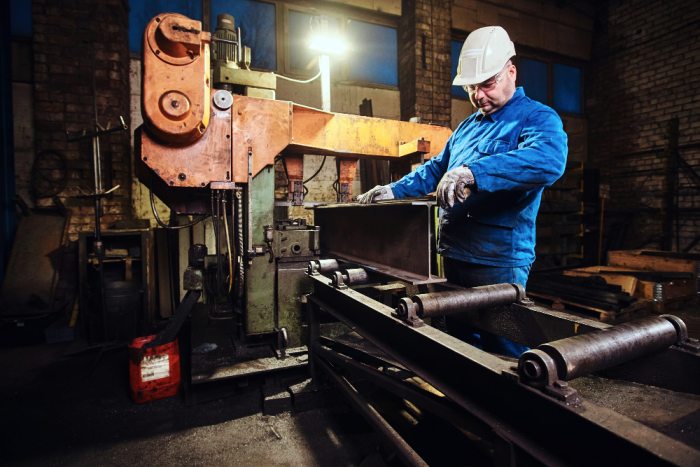Jak produkuje się stal
Imagine yourself immersed in the mammoth, cacophonous symphony of a steel mill where the melding of human ingenuity and the unabated force of machinery dance together in a fiery waltz to fabricate the very skeleton of our modern civilization—steel. With its ubiquitous presence in structures, vehicles, and myriad tools, this alloy stands as a testament to human progress, yet the intricate choreography that unfolds in its creation often remains shielded from our daily cognizance.
The Alchemy of Iron and Carbon
In the heart of a steel-making colossus, one can witness the transformation of raw materials into the gleaming spine of today’s technological marvels. It begins with iron ore, a rocky substrate gleefully extracted from the crust of our Earth, which harbors the potential to become something far greater than itself. This unrefined protagonist, often accompanied by a retinue of limestone and coke—a carbon-rich derivative of coal—steps onto the grand stage of a blast furnace, a towering behemoth that devours these elements with insatiable appetite.
The air within this structure, superheated to temperatures that would make the Sun itself envious, instigates a passionate embrace between the elements, coaxing the iron ore to shed its oxygen—an act of chemical disrobing—leaving behind molten iron that pools in the furnace’s belly. This liquid treasure, glowing with newfound purity, is but at the infancy of its transformative journey.
The Bessemer Process: A Gust of Innovation
An ingenious process, named after its British inventor, Sir Henry Bessemer, offers a revitalizing gust upon the traditional methods of steel-making. The Bessemer converter—a vast, oblong receptacle capable of withstanding the fury of its contents—engulfs the molten iron and subjects it to a powerful huff of oxygen, stripping away unwanted carbon with relentless efficiency.
Within this fiery crucible, impurities such as silicon, manganese, and phosphorus bitterly succumb to the oxygen’s purging embrace, morphing into a frothy slag that floats atop the metal bath. What remains is a composition longing for stability, a delicate balance between iron and carbon, now liberated from the shackles of excess and impurity.
Electric Arc Furnaces: Harnessing Thunderbolts
In an era fervently chasing sustainability, the electric arc furnace emerges as a beacon of modernity, breathing new life into scrap metal with the ferocity of a controlled thunderbolt. Truckloads of scrap, remnants of a voracious society’s consumption, find redemption in the electric embrace of these furnaces.
Here, electrodes, archaic in their resemblance to the mythical hammer of Thor, discharge bolts of electricity that sear through the metal scraps, artfully transforming them into a molten elixir ready to be reborn as steel. This method not only venerates the principle of recycling but also necessitates a fraction of the energy required by traditional processes, elegantly intertwining ecological consciousness with industrial efficiency.
Continuous Casting: The Unbroken Lineage of Steel
As the molten steel bids farewell to the furnace that was both its crucible and womb, it ventures forth into the pioneering technology of continuous casting. No longer must steel be poured into intermediary molds to cool and harden only to be re-melted; now, it flows like a silvery river directly into long, horizontal molds where it congeals into solid strands.
Under the vigilant gaze of operators, whose expertise is etched into the furrowed brows of their soot-smeared faces, the metal gradually assumes its destined form. The strands, still radiating the warmth of their fiery birth, pass through rollers that press them into beams, rods, or other profiles, marking the culmination of a remarkable odyssey from earth to edifice.
In the narrative of steel-making, one is compelled to pause and marvel at the paradoxical beauty that dwells within this industry. The scorching heat and grime cloak an elegant ballet of science and labor, a testament to humankind’s indomitable will to mold the very bones of our societal framework.
In the words of Walter Cronkite, „And that’s the way it is.” Behind the ubiquitous presence of steel lies a story of remarkable alchemy, a tale of transformation witnessed by the few but essential to the many. It’s a narrative spun with threads of innovation and ecological mindfulness, a continuous quest for refining the art and science of creating the alloy that ascends beyond its humble origins to support and elevate humanity.
